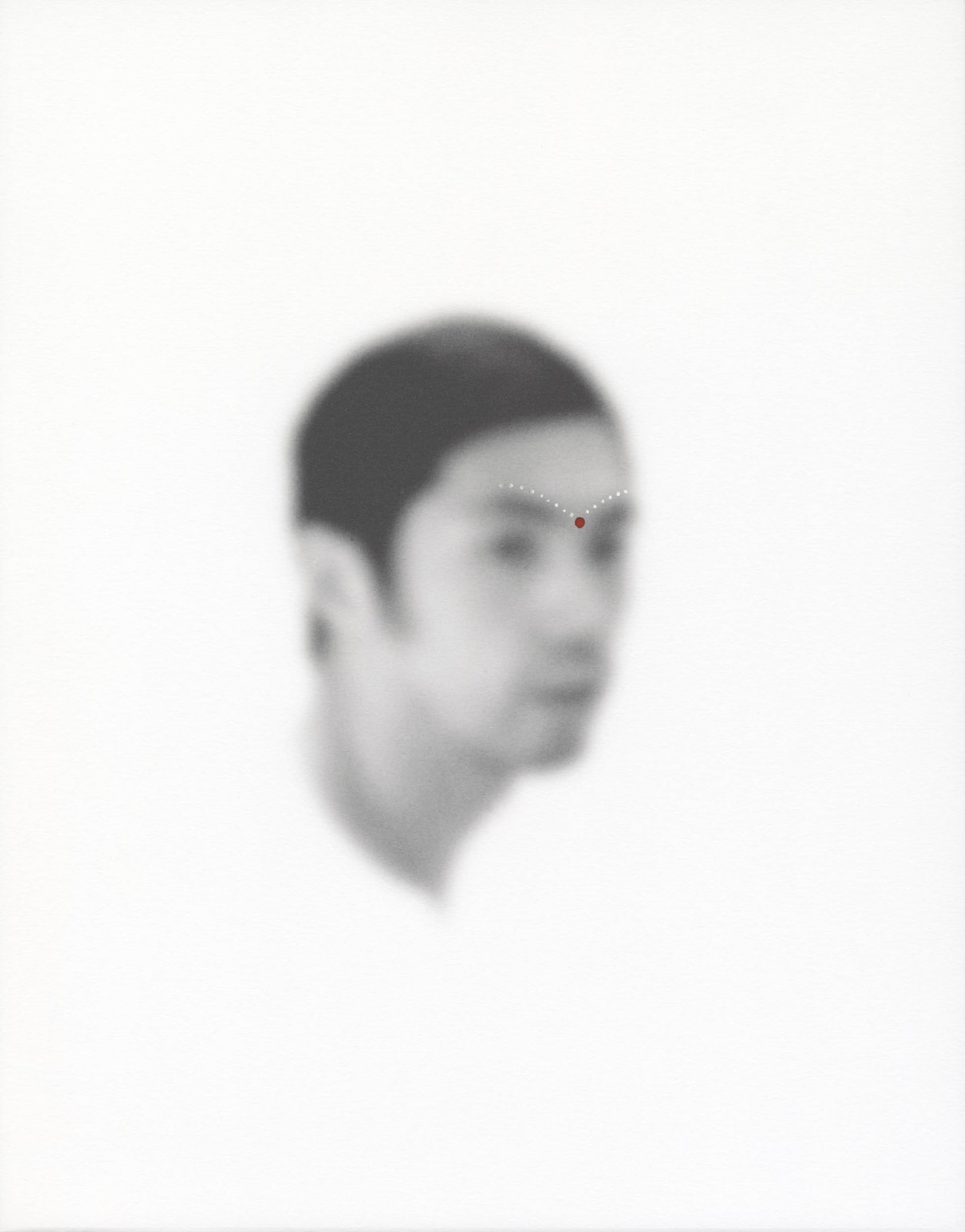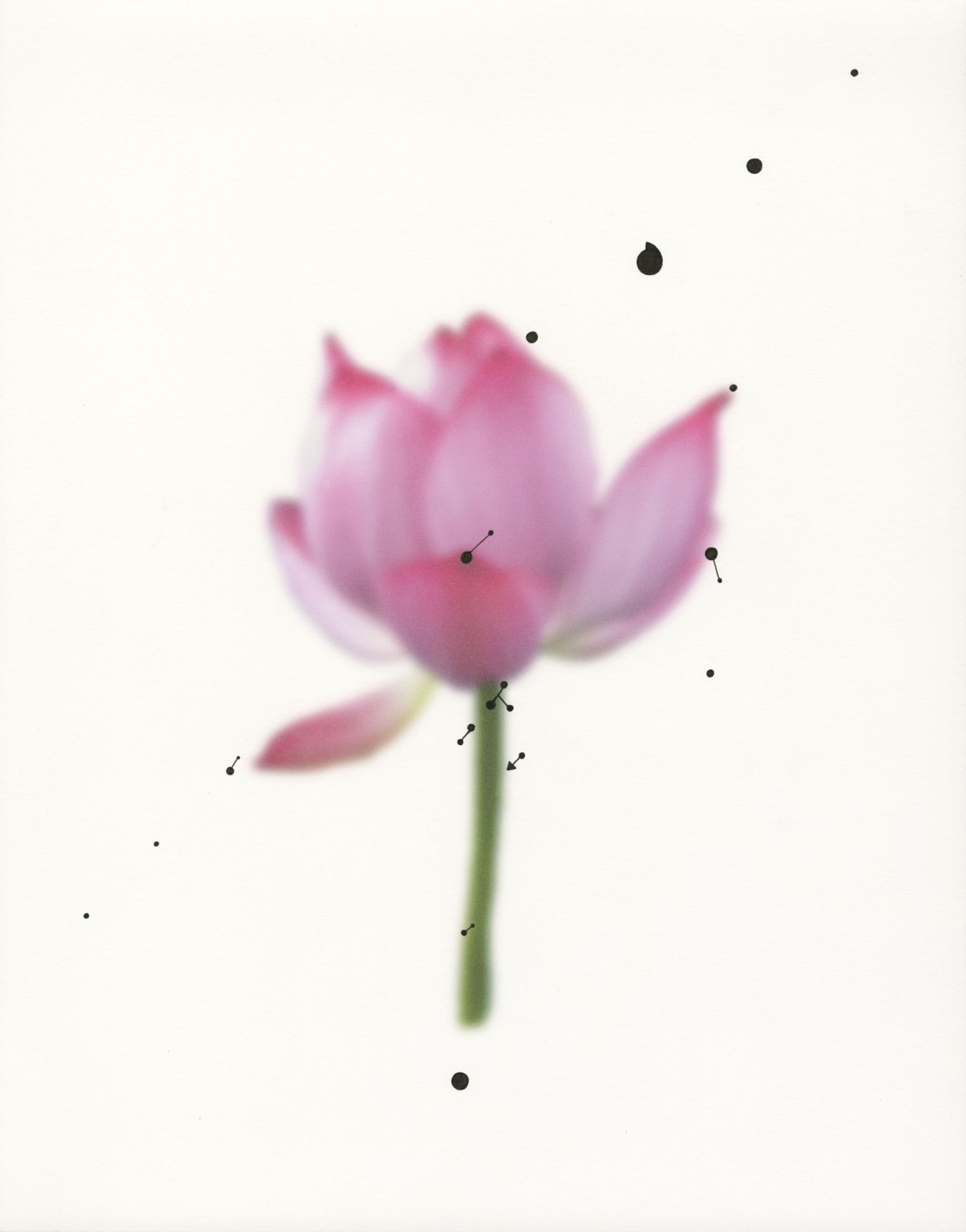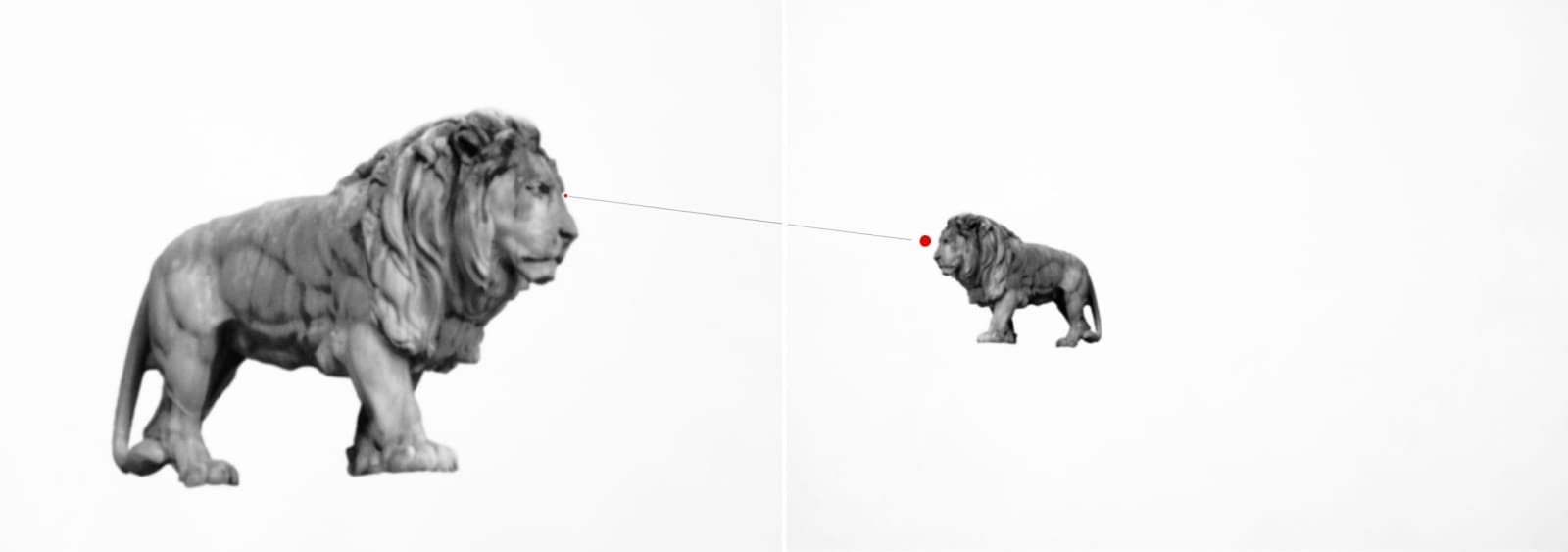Shen Wei: Perhaps, A Path to Our Desires for Beauty, Secrecy, and Pleasure.
Imagination, memory, and fantasy are the inspiration for this body of work. Combining photographic images with minimalistic drawing elements, Invisible Altas is my visual interpretation of how internal and external energy forms around and through the objects and the bodies. Fascinated by the Chinese philosophy of “qi”-an unseen life force and a method of healing. I want to bring viewers to a poetic, surrealistic and seductive multidimensional world, perhaps a path to our desires for beauty, secrecy, and pleasure.
—— Shen Wei Invisible Altas
Fu Qiumeng Fine Art presented the first photography group exhibition, “Yet, Only Voice Echoed”, as an extension research project of the QM project. The exhibition curator Cathy Fan, who’s the chief editor of Artnet News, presented the works of six artists, Michael Cherney, Lois Conner, Su Jiehao, Shen Wei, Chen Ronghui, and Benjamin Langford. Shen Wei exhibited three works from his series Invisible Altas (2014-present); Bliss, Bindi, and Crying Lotus.
Among Shen Wei’s works, there are numerous works about nudity, especially his self-portraits. He thinks the creative process of making self-portraits is a process of self-awareness and self-exploration. He once said, “Through the process of self-discovery and self-reflection, I understood the tension between freedom and boundary.”
In modern science, the Superstring Theory introduced the existence of different dimensions, which are very different from the third-dimension world that humans live in. The overlapping multi-dimensions are hard to be perceived by human eyes. In Shen Wei’s series, he portrayed the third-dimension world into a two-dimensional world. The invisible energy was placed in a more visible layer.
The Superstring Theory and Chinese Taoism philosophical concept “Dao begets One (nothingness; or reason of being), One begets Two (yin and yang), Two begets Three (Heaven, Earth, and Man; or yin, yang, and qi), Three begets all things” have a similarity. In Laozi’s The Classic of the Way and the Natural Virtue, its theory of universal formation introduced the process from one to all, simple to complex. It coincides with the theory of overlapping multidimensions affecting each other and forming the universe. Shen Wei described “qi” as “an unseen life force and a method of healing”. The Invisible Atlas series reveals the artist’s thoughts on the complexity of the universe.
When one hears about Shen’s experience, one might assume Shen Wei visualizes the “qi” before creating the photographic images. But, according to Shen Wei, the photo image and its visualized “qi” often appear simultaneously. He imagined the shapes of “qi” at the same time he was photographing. This is parallel with his past photography ideology; relying on personal feeling and instinct. FQM was honored to interview Shen Wei, and he mentioned, “Audiences are not required to know my own story. I hope the audiences would interpret the work themselves, not only rely on my personal story.”
Q: Why is the series named “Invisible Altas”?
A: The theme of this series is to explore the invisible energy we are in. The energy itself is reminiscent of an invisible multidimensional map surrounding us.
Q: In your past works, most of them encompass the style of realistic photography. Why does the series of Invisible Altas adopt the form of photography and painting?
A: The difference between this series and my other photography series is that the drawing elements are almost simultaneously created with the photographs. For me, when I photograph each work, the drawing elements were already created in my mind.
Q: Different from the previous portraits, why do many portraits in this series have many blurred details?
A: In this series, the unseen “qi” is visualized, I place them in the first dimension, the first layer where we can see clearly, so the photographic objects are made out of focus to highlight these invisible elements.
Q: In the portrait, you combined the form of the painting with photography. You played many different roles. Do these roles have any personal significance?
A: These characters are inspired by memories, imagination, and personal experiences. For example, the lotus is one of my favorite flowers. When I was learning ink painting as a child, I frequently painted lotus. But, since I grew up in Shanghai I rarely had the opportunity to see it. Therefore, I am always very touched by the beauty of the Lotus every time I saw them while traveling. I like the peaceful atmosphere of the lotus. Whether it is in Hangzhou’s West Lake in the Summer Palace of Beijing, the elegance of lotus always exudes a unique aura.
Q: How do you interpret the concept of “qi” in Chinese philosophy? When shooting portraits and objects, did you imagine the form of “qi”?
A: In these works, the visualized “qi” comes from my instinctive reaction. I respond to my surroundings visually and spontaneously, which is also a kind of self-exploration.
Q: In the work “Bindi”, where does the concept of “third eye” come from?
A: Bindi was created after I returned from a trip to India. Bindi symbolizes the third eye, which can witness the love and see the invisible universe.
Q: Throughout your growth as an artist, have there been any special experiences that inspired you to explore the relationship between people and surroundings?
A: I think exploring the relationship between people and the environment is an indispensable part of the growing process. At every stage of growth, we are exploring this relationship consciously and/or unconsciously.







